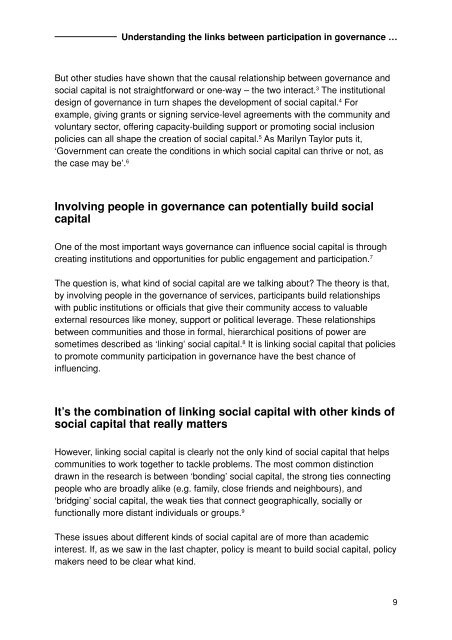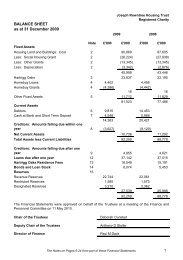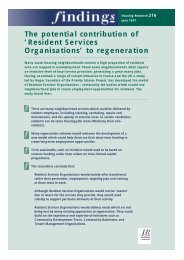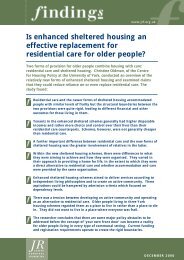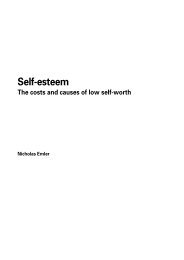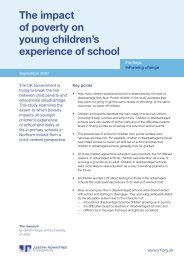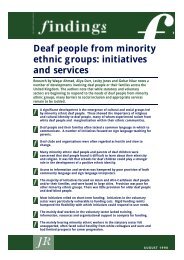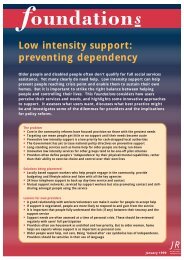Community participation - Joseph Rowntree Foundation
Community participation - Joseph Rowntree Foundation
Community participation - Joseph Rowntree Foundation
Create successful ePaper yourself
Turn your PDF publications into a flip-book with our unique Google optimized e-Paper software.
Understanding the links between <strong>participation</strong> in governance …<br />
But other studies have shown that the causal relationship between governance and<br />
social capital is not straightforward or one-way – the two interact. 3 The institutional<br />
design of governance in turn shapes the development of social capital. 4 For<br />
example, giving grants or signing service-level agreements with the community and<br />
voluntary sector, offering capacity-building support or promoting social inclusion<br />
policies can all shape the creation of social capital. 5 As Marilyn Taylor puts it,<br />
‘Government can create the conditions in which social capital can thrive or not, as<br />
the case may be’. 6<br />
Involving people in governance can potentially build social<br />
capital<br />
One of the most important ways governance can influence social capital is through<br />
creating institutions and opportunities for public engagement and <strong>participation</strong>. 7<br />
The question is, what kind of social capital are we talking about? The theory is that,<br />
by involving people in the governance of services, participants build relationships<br />
with public institutions or officials that give their community access to valuable<br />
external resources like money, support or political leverage. These relationships<br />
between communities and those in formal, hierarchical positions of power are<br />
sometimes described as ‘linking’ social capital. 8 It is linking social capital that policies<br />
to promote community <strong>participation</strong> in governance have the best chance of<br />
influencing.<br />
It’s the combination of linking social capital with other kinds of<br />
social capital that really matters<br />
However, linking social capital is clearly not the only kind of social capital that helps<br />
communities to work together to tackle problems. The most common distinction<br />
drawn in the research is between ‘bonding’ social capital, the strong ties connecting<br />
people who are broadly alike (e.g. family, close friends and neighbours), and<br />
‘bridging’ social capital, the weak ties that connect geographically, socially or<br />
functionally more distant individuals or groups. 9<br />
These issues about different kinds of social capital are of more than academic<br />
interest. If, as we saw in the last chapter, policy is meant to build social capital, policy<br />
makers need to be clear what kind.<br />
9


